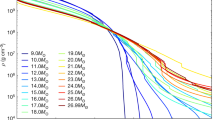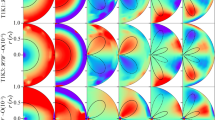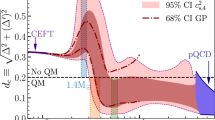Abstract
ACCORDING to the current theory, the evolution of sufficiently massive stars leads eventually to gravitational instability and collapse. After thermonuclear burning has stopped, dense stellar cores become unstable and collapse to form neutron stars (pulsars) or black holes. In both cases energy of the order of 0.1 Mc2 is released, mostly in the form of neutrinos and gravitational waves. As the radius of the core decreases, its magnetic field grows (magnetic flux is conserved) and can reach huge values of order 1012–1013 G. Even greater azimuthal fields (∼3 × 1015 G) can be generated by differential rotation of the core1. It will be shown here that neutrino emission in the collapse is asymmetric, as a result of parity nonconservation in weak interactions. Neutrinos and antineutrinos are emitted preferentially in the direction parallel to the local magnetic field of the collapsing core.
This is a preview of subscription content, access via your institution
Access options
Subscribe to this journal
Receive 51 print issues and online access
$199.00 per year
only $3.90 per issue
Buy this article
- Purchase on Springer Link
- Instant access to full article PDF
Prices may be subject to local taxes which are calculated during checkout
Similar content being viewed by others
References
Le Blanc, J. M. & Wilson, J. R. Astrophys. J. 161, 541–551 (1970).
Berestetskii, V. B., Lifshitz, E. M. & Pitaerskii, L. P. Relativistic Quantum Theory (Pergamon, New York, 1971).
Aznett, W. D. Astrophys. J. 218, 815–833 (1977).
Nadyozhin, D. K. Astrophys. Space Sci. 53, 131–153 (1978).
Kazanas, D. Nature 267, 501–502 (1977).
Author information
Authors and Affiliations
Rights and permissions
About this article
Cite this article
VILENKIN, A. Parity nonconservation and stellar collapse. Nature 280, 569–570 (1979). https://doi.org/10.1038/280569a0
Received:
Accepted:
Published:
Issue Date:
DOI: https://doi.org/10.1038/280569a0
This article is cited by
-
Investigating the effect of a magnetic field on beta decay
Soviet Physics Journal (1986)
Comments
By submitting a comment you agree to abide by our Terms and Community Guidelines. If you find something abusive or that does not comply with our terms or guidelines please flag it as inappropriate.



